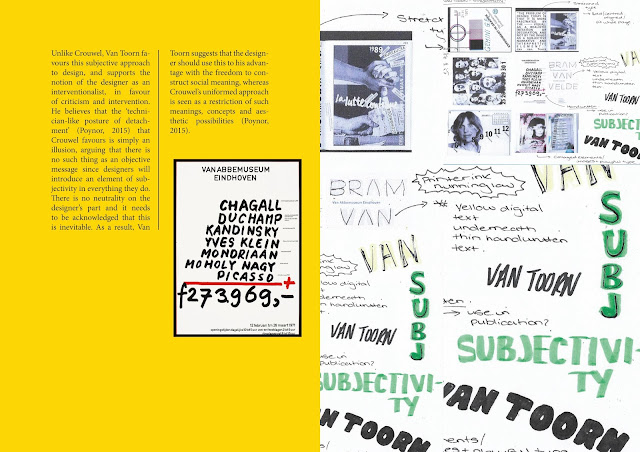Context
of practice 3: Practical brief template
Name
|
Megan
Keighley.
|
Brief title
|
How
has the resurgence of handmade methods of design production affected the
culture of 21st Century digital graphic design?
|
Brief (outline the general aims of
the project)
|
-
Produce a body of work using handmade techniques – focus on screen-printing
in particular.
-
In the form of a screen-printed poster campaign, look at the advantages of
traditional, handmade methods of graphic design in the digital age – look at
the ‘late age of print’ and how this has affected digital culture, what makes
handmade techniques so appealing?
|
Background / considerations
|
-
Constantly consider and refer back to the initial research question to ensure
this and the presented arguments are being communicated through the practical
work.
-
Look at the history of traditional print and print culture to help inform the
work (‘the age of print’, 1450).
- Also consider print capitalism (1842) - the replacement of culture with popular culture, the idea of the mechanical vs. the intellectual.
- Also consider print capitalism (1842) - the replacement of culture with popular culture, the idea of the mechanical vs. the intellectual.
-
Print culture AND distribution – think about how the campaign material would
potentially be distributed and reproduced on a large scale if used in the real
world (advantages/ disadvantages over digital?)
Deliverables
|
-
A significant body of research, documented through blog posts.
- Ideas generation and prototypes. - A finished outcome communicating the intended message and research question.
-
5 – 6 design boards documenting the process.
|
Mandatory requirements (essential
requirements that must be followed)
|
-
Must be related and respond to the research question (how has the resurgence
of handmade methods of design production affected the culture of 21st
Century digital graphic design?)
-
Must demonstrate you are able to make sense of and use theoretical research
in the development of graphic design work (use processes such as
screen-printing – those with a focus on the handmade.
-
Must be embedded within some kind of graphic design practice.
-
Must demonstrate design process – brief analysis – research (visual,
contextual, theoretical) – ideas generation – ideas development – prototypes
– further developments – outcomes.
-
Develop contextual and critical awareness in the development of graphic
design work/practice – demonstrate your process, criticality and creatively.
|
Research: references to reading
(essay)
|
-
By Hand: Handmade Elements in Graphic
Design by PIE Books.
-
The New Handmade Graphics: Beyond
Digital Design by Anne Odling-Smee.
-
Fingerprint: The Art of Using Handmade
Elements in Graphic Design by Chen Design Associates.
|
































































